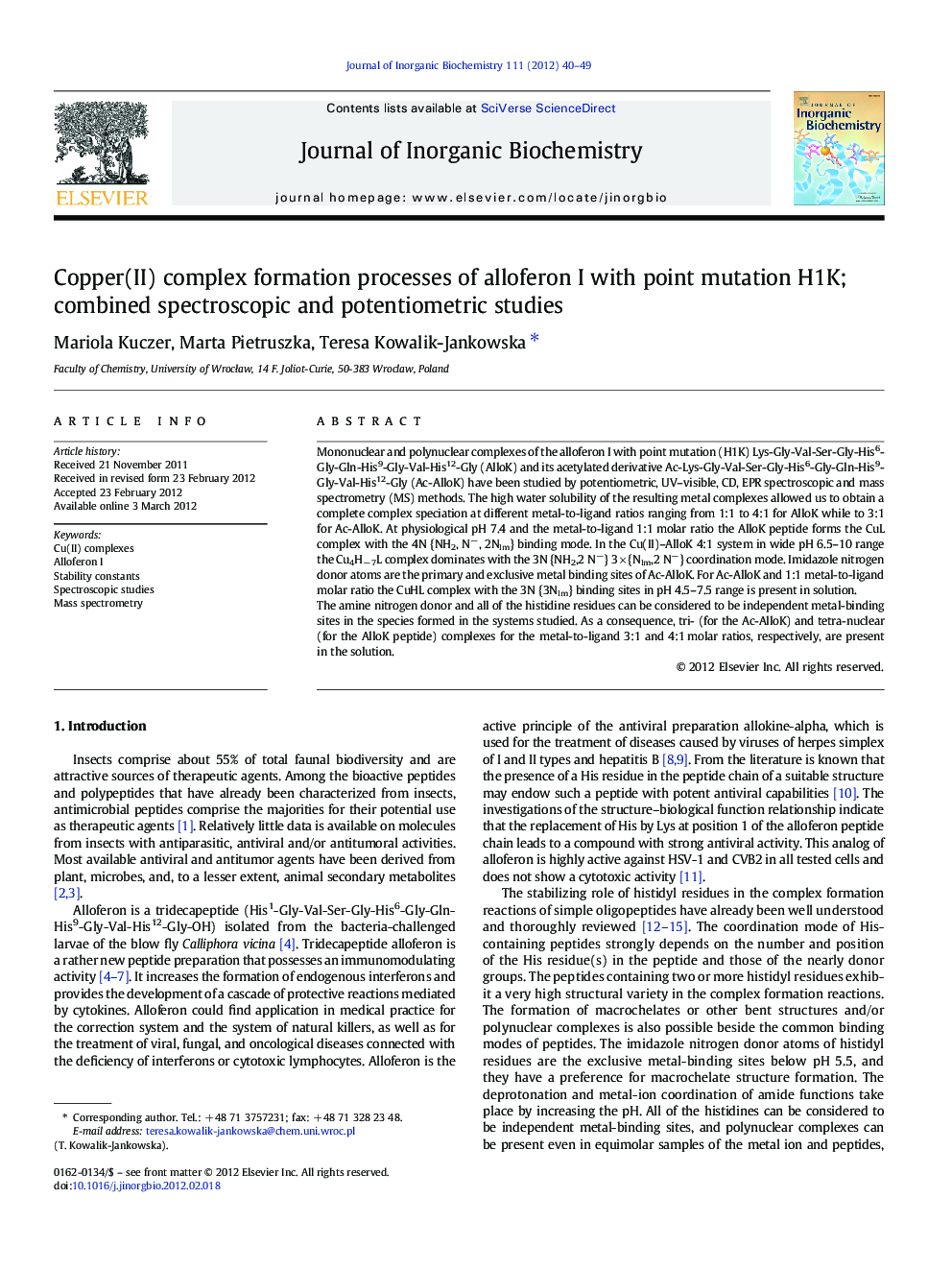| کد مقاله | کد نشریه | سال انتشار | مقاله انگلیسی | نسخه تمام متن |
|---|---|---|---|---|
| 1317749 | 1499476 | 2012 | 10 صفحه PDF | دانلود رایگان |

Mononuclear and polynuclear complexes of the alloferon I with point mutation (H1K) Lys-Gly-Val-Ser-Gly-His6-Gly-Gln-His9-Gly-Val-His12-Gly (AlloK) and its acetylated derivative Ac-Lys-Gly-Val-Ser-Gly-His6-Gly-Gln-His9-Gly-Val-His12-Gly (Ac-AlloK) have been studied by potentiometric, UV–visible, CD, EPR spectroscopic and mass spectrometry (MS) methods. The high water solubility of the resulting metal complexes allowed us to obtain a complete complex speciation at different metal-to-ligand ratios ranging from 1:1 to 4:1 for AlloK while to 3:1 for Ac-AlloK. At physiological pH 7.4 and the metal-to-ligand 1:1 molar ratio the AlloK peptide forms the CuL complex with the 4N {NH2, N−, 2NIm} binding mode. In the Cu(II)–AlloK 4:1 system in wide pH 6.5–10 range the Cu4H− 7L complex dominates with the 3N {NH2,2 N−} 3 × {NIm,2 N−} coordination mode. Imidazole nitrogen donor atoms are the primary and exclusive metal binding sites of Ac-AlloK. For Ac-AlloK and 1:1 metal-to-ligand molar ratio the CuHL complex with the 3N {3NIm} binding sites in pH 4.5–7.5 range is present in solution.The amine nitrogen donor and all of the histidine residues can be considered to be independent metal-binding sites in the species formed in the systems studied. As a consequence, tri- (for the Ac-AlloK) and tetra-nuclear (for the AlloK peptide) complexes for the metal-to-ligand 3:1 and 4:1 molar ratios, respectively, are present in the solution.
Mononuclear and polynuclear complexes of the alloferon I with point mutation (H1K) Lys-Gly-Val-Ser-Gly-His6-Gly-Gln-His9-Gly-Val-His12-Gly (AlloK) and its acetylated derivative (Ac-AlloK) have been studied by potentiometric, UV–vis, CD, EPR and mass spectrometry (MS) methods.Figure optionsDownload as PowerPoint slideHighlights
► The copper(II) complexes formed in aqueous solution were studied by the spectroscopic (UV-Vis, CD, EPR), mass spectrometry (MS) and potentiometric methods.
► The protonation and formation constants of the alloferon I derivatives and copper(II) complexes, respectively, are determined.
► The mono- and polynuclear copper(II) complexes are characterized.
Journal: Journal of Inorganic Biochemistry - Volume 111, June 2012, Pages 40–49